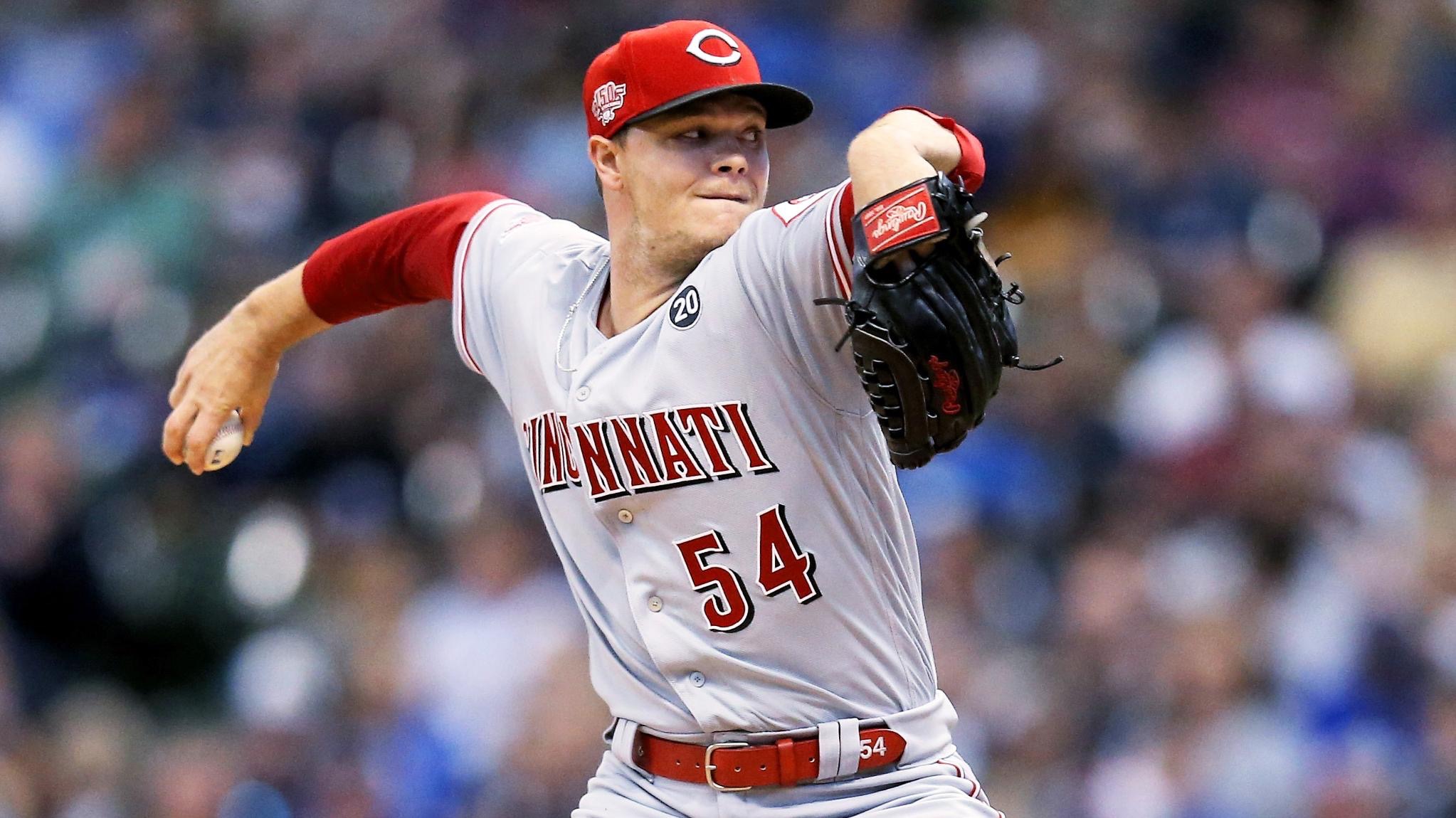
Well, 49.
Reds broadcaster Chris Welsh noticed and called attention to it right away. Last night, Sonny Gray started throwing his vaunted curveball early and often. He deployed it for a called strike against Lorenzo Cain in the Brewers first at bat of the game. Gray used it five more times in the first inning on the way to a sparkling performance.
Gray’s 8-inning masterpiece was his longest and best start for the Reds. He struck out twelve Milwaukee batters and walked one. In the 4th inning, Gray threw 8 pitches, all for strikes.
The Brewers managed four hits – all singles – off of Gray’s 111 offerings. Of the 13 balls Milwaukee put in play against Gray, 8 were hit below 90 mph EV. Only one, a single by Lorenzo Cain, was over 95 mph.
It was a command performance, so to speak, by a pitcher the Reds acquired in January from the New York Yankees. Gray is working for $7.5 million this year and signed to a $30.5 million contract extension covering 2020-22. Those are Gray’s age 30-32 seasons.
The early returns on the Reds investment in Gray are promising. His ERA is 20 percent below league average, FIP 25 percent below league average and xFIP 21 percent below the MLB average rate. Gray’s strikeout rate (27.8%) is a career best, and ahead of the average starting pitcher (22.1%) by a considerable margin.
This chart is a 200-PA rolling average of Sonny Gray’s strikeout rate over his career. The red line is the 2019 MLB average.

Luis Castillo and Tanner Roark have lower ERAs than Sonny Gray, but Gray is the staff ace when it comes to FIP and xFIP (defense and luck neutral stats), metrics that better-predict future performance than ERA.
About that curveball …
The average spin rate for Sonny Gray’s curveball is 2918 rpm. That’s in the 96th percentile in the major leagues. It breaks 3.1 inches down and 7.0 inches across. That’s in addition to the effect of gravity. All that movement puts Sonny Gray in a sparsely populated, but good-place-to-be quadrant among major league pitchers. The red arrow helps you find Gray’s place. That’s the curveball pantheon.

Here is what opposing batters manage against Gray’s curveball, with league average in parentheses:
- .174 Batting Average (.252)
- .275 Slugging Percentage (.431)
- .208 wOBA (.319)
Now, back to those 39 curves last night …
Sonny Gray normally throws his curve about a quarter of the time (24.8%). That’s the same rate he did early in his career at Oakland.

Last night, Gray threw his curveball on 44.1% of his pitches. That’s the highest rate this year, by far. Only twice out of 124 career starts did Gray throw more.
Out of 49 curves, the Brewers swung and missed 10 times. Check out where those pitches were. They’re pink on this chart, well away from the plate. That’s some serial O-Swing.

Twelve other times Gray’s curve was a strike and the batter didn’t swing. Those are the orange dots. Legendary radio broadcaster Ernie Harwell had a call where he said the batter “stood there, like a house at the side of the road.” The Brewers put up a crowded subdivision against Sonny Gray’s curveball.
Milwaukee put Gray’s curveball into play just six times. Only once for a hit. That’s the red dot in the middle. A single with an 82.3 mph exit velocity. One other Gray curveball went for a double play.
Gray’s 17th start for the Reds was a wonder to watch.
And here’s the thing.
Sonny Gray’s curveball isn’t his best pitch. But the 29-year-old gave his devastating slider the night off, relatively speaking, and dominated the first-place Milwaukee Brewers with his curve.
[Featured image: https://twitter.com/Reds/status/1149736445290196994; Graphics: StatCast and FanGraphs]


